Viduneth Ariyarathna
Vision Transformer with Convolutional Encoder-Decoder for Hand Gesture Recognition using 24 GHz Doppler Radar
Sep 12, 2022
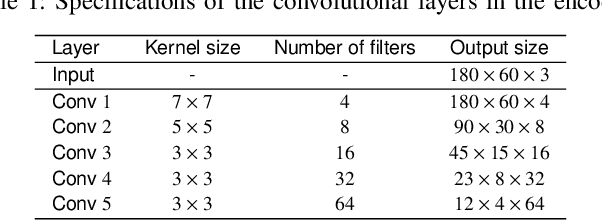
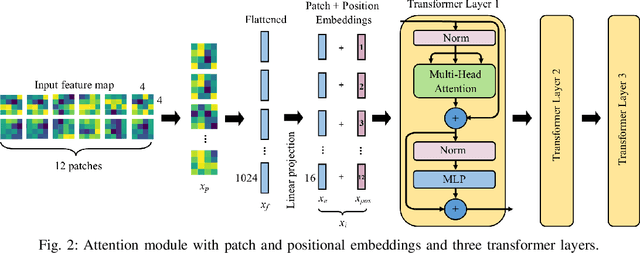
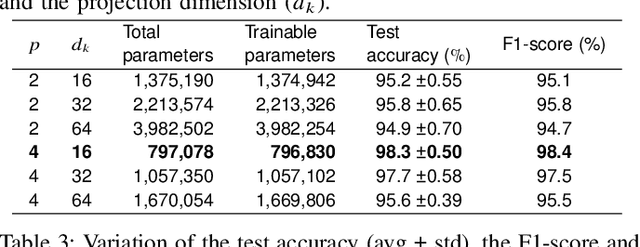
Abstract:Transformers combined with convolutional encoders have been recently used for hand gesture recognition (HGR) using micro-Doppler signatures. We propose a vision-transformer-based architecture for HGR with multi-antenna continuous-wave Doppler radar receivers. The proposed architecture consists of three modules: a convolutional encoderdecoder, an attention module with three transformer layers, and a multi-layer perceptron. The novel convolutional decoder helps to feed patches with larger sizes to the attention module for improved feature extraction. Experimental results obtained with a dataset corresponding to a two-antenna continuous-wave Doppler radar receiver operating at 24 GHz (published by Skaria et al.) confirm that the proposed architecture achieves an accuracy of 98.3% which substantially surpasses the state-of-the-art on the used dataset.
Towards a Low-SWaP 1024-beam Digital Array: A 32-beam Sub-system at 5.8 GHz
Jul 19, 2022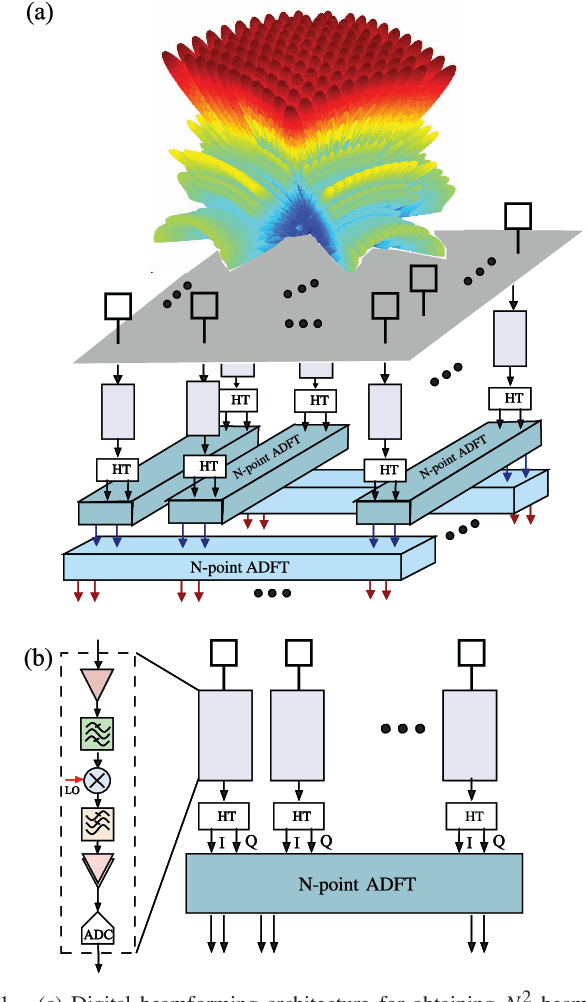

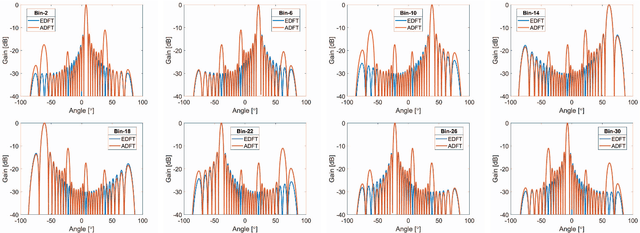

Abstract:Millimeter wave communications require multibeam beamforming in order to utilize wireless channels that suffer from obstructions, path loss, and multi-path effects. Digital multibeam beamforming has maximum degrees of freedom compared to analog phased arrays. However, circuit complexity and power consumption are important constraints for digital multibeam systems. A low-complexity digital computing architecture is proposed for a multiplication-free 32-point linear transform that approximates multiple simultaneous RF beams similar to a discrete Fourier transform (DFT). Arithmetic complexity due to multiplication is reduced from the FFT complexity of $\mathcal{O}(N\: \log N)$ for DFT realizations, down to zero, thus yielding a 46% and 55% reduction in chip area and dynamic power consumption, respectively, for the $N=32$ case considered. The paper describes the proposed 32-point DFT approximation targeting a 1024-beams using a 2D array, and shows the multiplierless approximation and its mapping to a 32-beam sub-system consisting of 5.8 GHz antennas that can be used for generating 1024 digital beams without multiplications. Real-time beam computation is achieved using a Xilinx FPGA at 120 MHz bandwidth per beam. Theoretical beam performance is compared with measured RF patterns from both a fixed-point FFT as well as the proposed multiplier-free algorithm and are in good agreement.
* 19 pages, 8 figures, 4 tables. This version corrects a typo in the matrix equations from Section 3
 Add to Chrome
Add to Chrome Add to Firefox
Add to Firefox Add to Edge
Add to Edge